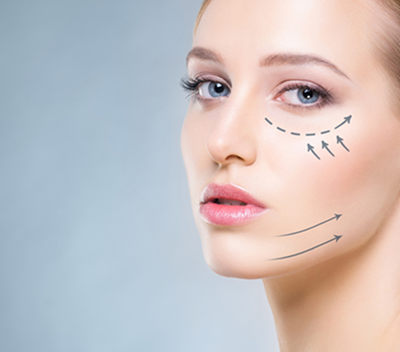The New Face of Plastic Surgery: How Ozempic, Hormones, and Social Media Are Reshaping Aesthetics in 2025
 Dave.C - Plastic Surgery
Dave.C - Plastic Surgery
 Aug 22, 2025
Aug 22, 2025
The world of plastic surgery is undergoing a transformation. Fueled by rapid medical advancements, shifting social norms, and the rise of powerful medications like Ozempic, more people are seeking aesthetic procedures to align their appearance with their evolving health and lifestyle goals. According to a recent survey conducted by the American Academy of Facial Plastic and Reconstructive Surgery (AAFPRS), 2024 saw several major shifts in both the types of procedures being performed and the reasons patients are turning to them.
Ozempic Face: The New Cosmetic Concern
Perhaps the most talked-about trend in 2025 is what has been unofficially labeled the “Ozempic face.” As medications like GLP-1 receptor agonists (Ozempic, Wegovy, Mounjaro) become mainstream for rapid weight loss, they’re leading to unanticipated aesthetic side effects—particularly in the face.
Rapid fat loss can result in facial deflation, hollowing, and sagging skin, especially in patients over 35. Surgeons across the country are reporting a notable increase in fat-grafting procedures, dermal fillers, and non-surgical skin tightening treatments as patients seek to reverse the gaunt, tired appearance that can follow sudden weight loss. In fact, the AAFPRS survey noted a 50% increase in facial fat grafting procedures in the past year alone.
“Patients are thrilled with the weight loss, but they’re not prepared for how it ages their face,” said Dr. Patrick Byrne, President of AAFPRS. “Volume loss in the cheeks and temples, deeper lines, and loose skin are common complaints — and we’re addressing them more frequently with advanced facial rejuvenation techniques.”
Facelifts Are Getting Younger
While facelifts have long been associated with patients in their 60s or older, there is a growing shift toward early intervention among younger adults. The data reveals that nearly 32% of facelift patients are now between the ages of 35 and 55, a significant increase from past years. Surgeons attribute this change to the desire for “prejuvenation” — a proactive approach to aging that focuses on maintaining youthfulness before severe signs of aging appear.
This younger demographic is also more open to combining surgical and non-surgical methods. Patients are layering Botox, microneedling, laser resurfacing, and thread lifts alongside their facelifts for more natural, long-lasting results.
Men Embrace the Knife and the Needle
Cosmetic procedures are no longer a female-dominated space. The AAFPRS reports that 92% of facial plastic surgeons treated male patients in 2024, and this trend is only accelerating. While men are opting for traditional treatments like rhinoplasty (nose jobs), blepharoplasty (eyelid surgery), and facelifts, they are particularly dominant in hair restoration procedures, where they outpace women by a large margin.
Men are also driving growth in non-invasive treatments, including Botox, filler injections, and jawline contouring, as workplace competitiveness and social media presence continue to influence male grooming and appearance expectations.
Menopause and the Rise of Midlife Aesthetic Empowerment
Women navigating perimenopause and menopause are also reshaping the cosmetic landscape. Hormonal changes during this stage of life lead to thinning skin, volume loss, and weakened facial structure, prompting many women to explore options like biostimulatory fillers (such as Sculptra and Radiesse) that help restore collagen levels from within.
Dr. Byrne notes a cultural shift: “There’s a newfound openness around menopause. Women are no longer hiding their age—they’re embracing their journey and seeking treatments that help them feel confident and refreshed.”
This empowerment is being fueled by broader societal changes, where discussions around aging, hormone health, and self-care are increasingly normalized — particularly on platforms like TikTok, Instagram, and YouTube, where influencers openly share their treatment journeys.
The Influence of Social Media
Unsurprisingly, social media remains a major force in shaping aesthetic preferences. Trends like “fox eyes,” “lip flips,” and “Ozempic face” gain rapid visibility online and drive demand in cosmetic clinics. However, the ease of access to information is a double-edged sword — it brings awareness, but also spreads misinformation.
Steven Jurich, CEO of AAFPRS, warns consumers: “Not every practitioner you see online is qualified. Before undergoing any procedure, patients must verify that their surgeon is board-certified, trained in facial aesthetics, and experienced in the specific treatment they’re offering.”
Regenerative Treatments: The Future of Aesthetics
Looking ahead, the future of plastic surgery lies in regenerative medicine. Techniques like platelet-rich plasma (PRP) injections and exosome-based therapies are growing in popularity due to their ability to rejuvenate skin at the cellular level without surgery.
These innovations promise longer-lasting and more natural results by stimulating the body’s own healing processes. While still in their early stages, regenerative treatments are expected to revolutionize how patients approach both anti-aging and skin repair in the next few years.
Final Thoughts
From the rise of Ozempic-induced facial changes to a younger generation of facelift patients, the world of facial plastic surgery is evolving rapidly. What remains constant, however, is the importance of personalized, safe, and medically sound care. Whether patients are addressing age-related concerns, body changes, or simply seeking greater confidence, the message from experts is clear: choose qualified surgeons, do your homework, and approach cosmetic procedures as part of a larger journey toward self-care and well-being.
Trending News
-

The New Face of Plastic Surgery: How Ozempic, Hormones, and Social Media Are Reshaping Aesthetics in 2025 Dave.C
-

How to Treat Pigmentation Changes on Melanin-Rich Skin Post-Eczema David.C
-

9 Recovery Tips From a Plastic Surgeon (and Patient) to Make Healing Easier Dave.M
-

Should You Consider Breast Explant Surgery? Dave.M
-

Are Your Implants Covered? Understanding Plastic Surgery Complication Insurance David.C
